Last Updated on January 2, 2024 by Matt Greene
*Read our review guidelines.
This is my review of the best 56 degree wedges on the market in 2024.
I tested each and every wedge in this article both on the course and around the green.
Sand texture, grass type, chipping conditions, pitching conditions and the moisture in the ground will all be unique to your geographical location. These factors affect the loft and the bounce you need in a 56 degree.
In this best 56-degree wedge review, I will note benefits and features of each sand wedge and give my recommendations.
Best 56 Degree Wedge 2024
- Cleveland Smart Sole 4 Wedge (Editor's choice - the best wedges)
- Titleist Vokey SM9 Sand Wedge (Most consistent spin and distance control)
- TaylorMade MG3 Wedge (Top Tour choice)
- Callaway Mack Daddy CB Wedge (Most spin)
- Cleveland RTX Zipcore Wedge (Best feel and value for money)
Cleveland Smart Sole 4 Wedge
You won't find an easier to hit sand wedge from any lie
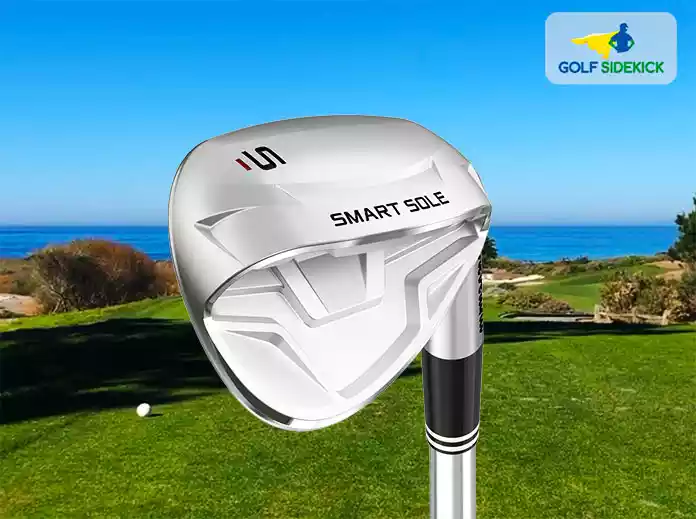
Ok - This is a 58 degree wedge, I'm sorry but it's so good that I've put it at the top of this list.
The S wedge comes in 58° which in my eyes is ideal for a sand wedge - like a love child of a sand wedge and a lob wedge. There's massive bounce in the Smart Sole making every wedge shot something you look forward to. It's so difficult to make a mess of a pitch or bunker shot, they're practically fool-proof.
Here's where this thing shines. You'll never fear sand again.
These things work, period.
You can find me using both C and S wedge in this video on my Youtube channel. The newest version of these wedges now includes a G wedge so you have C, G and S for a full complement of wedges.
So simple: Line up to the target. Don't manipulate the club face like you do with a normal sand wedge. Swing and hit the sand behind the ball. That's all! The club will do the rest. Is this a miracle club? I don't believe there are any, but yes this is the exception. Practice a little with this thing and you'll get out of the bunkers first time every time.
Pros
Cons
Titleist Vokey SM9 Sand Wedge
You can't go wrong with Vokey wedges
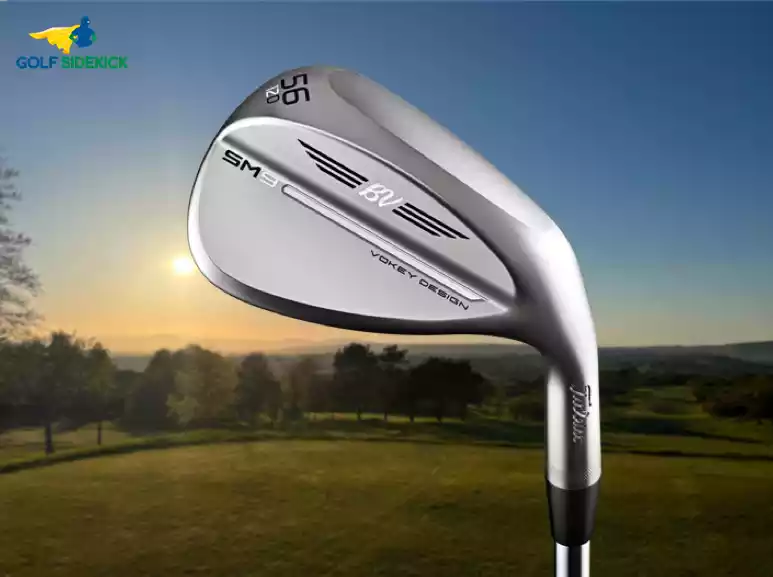
The SM9 wedge provided me with a delightful sense of control over my ball flight, all thanks to its forward center of gravity (CG), which would undoubtedly appeal to lower handicappers. I found it remarkably easier to square the clubface at impact, resulting in improved accuracy compared to previous SM wedges.
Titleist's decision to extend the grooves right to the edge in this 56-degree wedge was a game-changer, delivering sensational spin. During my testing, I loved the controlled trajectory my ball took before gracefully landing on the green and stopping quickly. The level of command I had over the ball's spin and shot shape left me thoroughly impressed.
With three distinct sole grinds tailored to different attack angles and conditions, the SM9 accommodates all player needs. While the F-grind may be a favorite among tour players, I found the D-grind's forgiveness and neutrality more to my liking.
Lastly, the Titleist SM9 caters to personal taste with three distinct finishes: Jet Black, Tour Chrome, and Brushed Steel, ensuring every golfer can find a wedge that matches their style and preferences. With its impeccable design and impressive performance, the SM9 undoubtedly cements itself as a top-notch wedge option in the golfing world.
Pros
Cons
TaylorMade MG3 Wedge
Always a contender - used by the best in the game
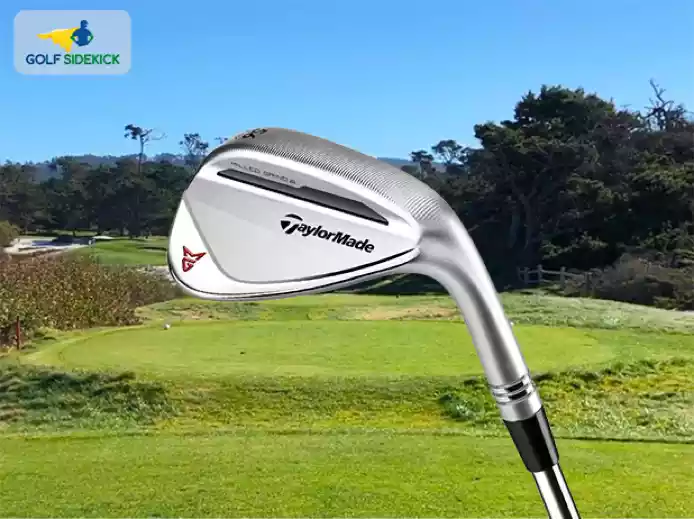
When it comes to mastering your wedge game, a soft feel and precise feedback are key for consistent distance control. Without finesse, gauging the necessary power becomes a challenge. Enter the TaylorMade MG3 SB, a standout in this category, delivering accurate flights and heightened control.
The Raw Face Micro Ribs provide superior texture across the clubface, combining a raw surface with raised grooves that expertly grip the golf ball upon contact. This imparts exceptional spin, allowing you to stop the ball rapidly near your target with unmatched precision.
The ZTP Raw Groove design takes spin performance to the next level, preserving spin even in wet conditions and across an expanded area of the clubface. For superior golfers, the broad weight distribution ensures an accurate flight and a drop-and-stop spin that'll have you performing like a pro.
Opt for the standard Satin Raw Chrome finish, reminiscent of tour player's wedges, or go with the Satin Raw Black for reduced glare. The choice is yours, but I prefer the glare-resistant option for maximum focus on my shots.
Crafted with a standard sole grind, the MG3 SB caters to the average player with a moderate angle of attack. This design ensures versatility and playability, making it the ultimate 56-degree wedge for elevating your short game and dominating the greens.
Pros
Cons
Callaway Mack Daddy CB Wedge
Spin it like Phil Mickelson
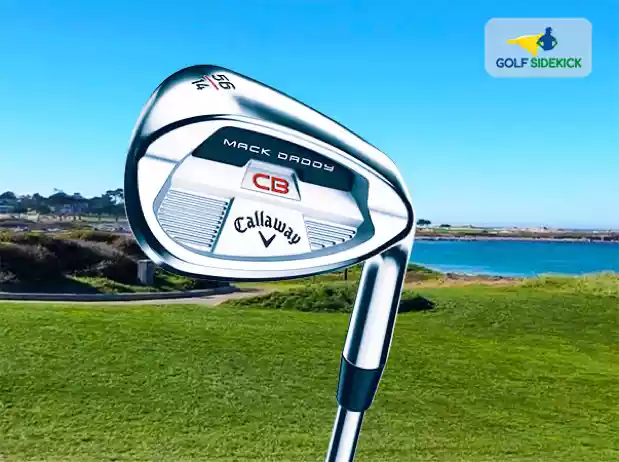
Mid-handicappers seeking the perfect 56-degree wedge value forgiveness, increased spin, and clean turf interaction as essential qualities. Wedges like the Callaway Mack Daddy CB excel in providing optimal shot-stopping ability, accuracy, and consistency, making them a top choice for improving short game performance.
The Mack Daddy CB's cavity back design equips the clubhead with perimeter weighting, creating a wider sweet spot that preserves ball speed and spin on every strike. This results in improved distance control, benefitting both full swings and delicate flop shots. The impressive JAWS Grooves contribute to this wedge's performance by generating rampant spin with their precise sharpness. These edges grip into the golf ball cover, promoting greater friction and spin around the green, ultimately enhancing control and the ability to stop the ball closer to the target.
For added versatility, Callaway engineers offer the Mack Daddy CB in two wedge grinds - the full and W-grind. After a few tests, the W-grind emerged as the preferred option, delivering a clean turf interaction and heightened forgiveness on a variety of shots. This makes the W-grind particularly well-suited for the average golfer seeking a wedge that can tackle diverse course conditions and shot scenarios with ease.
Pros
Cons
Cleveland RTX Zipcore Wedge
Best value premium wedge
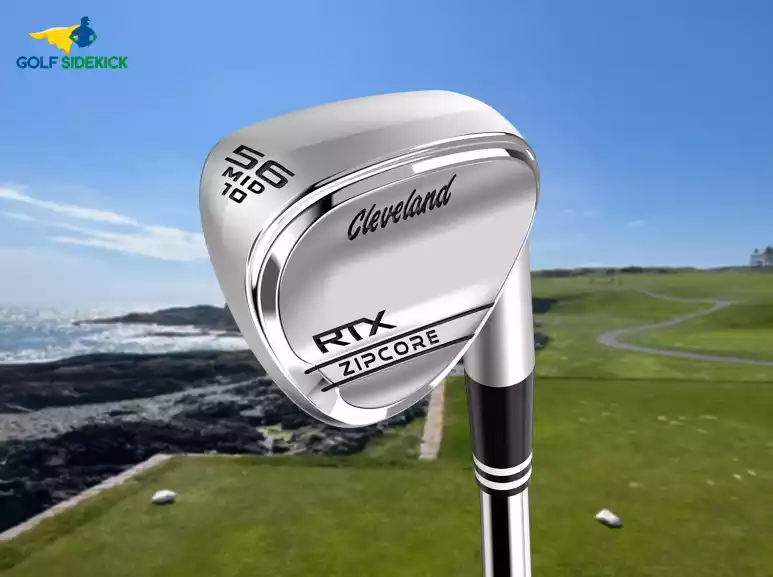
Cleveland's long-standing reputation for crafting exceptional wedges is only further amplified with the RTX ZipCore, solidifying its status as a legendary golf companion.
These well-balanced wedges exhibit superior and consistent performance across various lies and conditions, thanks to the innovative ZipCore technology that shifts the center of gravity. This significant advancement has earned them widespread acclaim.
The Ultizip grooves are equally remarkable, boasting deep and sharp features that generate ample spin around the green and on partial shots, enhancing overall shot control.
Cleveland's commitment to delivering value shines through in the heat-treated heads, ensuring enhanced durability and reduced need for replacements, translating to long-lasting performance.
The wedge heads strike a perfect balance between traditional shapes reminiscent of the revered 588s and modern design elements, seamlessly blending classic aesthetics with contemporary innovation.
The RTX ZipCore wedges have earned universal acclaim, a testament to their unwavering quality and performance. For golfers seeking an extraordinary short game experience, Cleveland's RTX ZipCore stands as an exceptional choice that lives up to its legendary heritage.
Pros
Cons
The verdict: Best 56 degree wedge
In our search for the best 56-degree wedge, one standout performer is the Cleveland Smart Sole 4. Ok it's a 58 degree technically, but with its game-improvement features, the Smart Sole 4 embraces a revolutionary design that excels in the short game arena. The advanced cavity back design and optimized sole grinds make this wedge deliver unparalleled forgiveness, allowing golfers to confidently tackle any lie or bunker.
The Smart Sole 4's Feel Balancing Technology enhances consistency, providing an impressive sense of control and precision on every shot. Its forgiving clubface and wider sole inspire newfound confidence, particularly for those seeking to simplify their short game.
For beginners and high handicappers aiming to elevate their scoring abilities, the Cleveland Smart Sole 4 emerges as a top-tier choice, blending innovation, forgiveness, and versatility. Elevate your short game to new heights with this exceptional 56-degree wedge, and enjoy more rewarding results on the greens.
What Is A 56 Degree Wedge Used For?
A 56-degree wedge is a type of golf club used for specific situations around the green, typically within 100 yards from the hole. It is a type of sand wedge, and the 56-degree loft angle refers to the angle between the face of the club and the shaft.
The 56-degree wedge is versatile and can be used for various shots, including:
- Pitch shots: When you need to hit the ball high in the air and have it land softly on the green, a 56-degree wedge is a good choice. This is particularly useful when you have a short distance to the pin and want to stop the ball quickly.
- Chip shots: When you want to keep the ball low and rolling for a short distance, a 56-degree wedge can be used for chipping around the green.
- Bunker shots: The 56-degree wedge is often referred to as a sand wedge because it is effective for hitting shots out of sand bunkers. Its high loft helps the ball get out of the sand and land softly on the green.
- Flop shots: When you need to hit the ball over an obstacle, like a bunker or a mound, and have it stop quickly, a 56-degree wedge can be used for a flop shot.
What Is The Difference Between A Blade Style And A Cavity Back Style Wedge?
The difference between a blade-style wedge and a cavity back-style wedge lies in their design and construction, particularly in terms of the clubhead's shape and weight distribution. These differences can significantly affect the wedge's performance and playability for different types of golfers.
- Blade-style wedge:
- Design: Blade-style wedges have a more traditional and classic appearance with a simple, compact clubhead design. The back of the clubhead is relatively smooth and straight, resembling the shape of older golf club designs.
- Weight distribution: Blade wedges usually have a higher center of gravity (CG) and place more weight behind the sweet spot or the center of the clubface. This concentrated weight gives them a smaller sweet spot, making them less forgiving on mishits.
- Playability: Blade wedges are generally preferred by skilled and experienced golfers who have consistent ball-striking abilities. They offer more shot-shaping control and allow better players to work the ball with precision, manipulating spin and trajectory as needed.
- Cavity back-style wedge:
- Design: Cavity back-style wedges have a more modern appearance, featuring a cavity or cavity-like indentation in the back of the clubhead. This cavity redistributes weight around the perimeter of the clubhead, which creates a more forgiving design.
- Weight distribution: The weight distributed around the cavity back wedge's perimeter increases the moment of inertia (MOI) and enlarges the sweet spot. This enhanced forgiveness helps reduce the impact of off-center strikes, leading to more consistent distance and accuracy, even on mishits.
- Playability: Cavity back wedges are well-suited for a broader range of golfers, including mid-to-high handicappers and beginners. They provide more forgiveness and help golfers achieve better results, especially when their ball-striking is not as consistent as that of more skilled players.
Choosing between a blade-style or cavity back-style wedge depends on your skill level and personal preference. If you are a highly skilled player looking for maximum shot-shaping control and feel, a blade-style wedge may be the preferred option. On the other hand, if you seek more forgiveness and consistency on your short-game shots, a cavity back-style wedge might be the better choice. Many golfers also opt for a mix of blade and cavity back-style wedges within their set to cater to different shot requirements.
Does The Shaft Matter In My Sand Wedge?
Yes, the shaft of your sand wedge can indeed make a difference in your overall performance and feel while using the club. The shaft plays a crucial role in the wedge's performance, and choosing the right one can help you optimize your short game shots, including bunker play and delicate shots around the green. Here are some key considerations regarding the shaft in your sand wedge:
- Shaft Material: The most common materials for wedge shafts are steel and graphite. Steel shafts are more prevalent in wedges due to their stability and ability to provide better control for short game shots. They offer a solid feel and are preferred by many golfers for their consistency. Graphite shafts, while lighter, are less common in wedges and are typically found in full iron sets, but they might suit players with slower swing speeds who need additional assistance with launch and distance.
- Shaft Flex: The shaft flex determines how much the shaft bends during the swing. For most golfers, a regular or stiff flex is suitable for a sand wedge. The choice between regular and stiff depends on your swing speed. Players with faster swing speeds might benefit from a stiffer shaft to maintain control and prevent the clubface from opening up too much on full swings. However, given the nature of most sand wedge shots (shorter and finesse shots), the impact of shaft flex is not as pronounced as it is with longer clubs.
- Weight: The weight of the shaft can influence the feel and swing characteristics of the sand wedge. A heavier shaft may provide a more stable feel, particularly for full swings and controlling shot trajectory. On the other hand, a lighter shaft could help increase clubhead speed for some players, providing additional distance on partial shots.
- Length: The standard length of a sand wedge is typically similar to that of other irons in your set. However, some golfers prefer slightly shorter or longer wedge shafts to better suit their swing and shot preferences. Shorter shafts can offer more control, especially on delicate shots, while longer shafts might provide additional distance but could potentially sacrifice some accuracy.
The Differences Between Wedge Lofts
Wedge lofts refer to the angle between the face of the wedge and the shaft. The loft angle determines the trajectory and distance the ball will travel when struck with the wedge. The three most common wedge lofts are:
Pitching Wedge (PW):
- Loft: Typically, the pitching wedge has a loft angle between 44 to 48 degrees.
- Usage: The pitching wedge is usually included as part of a standard iron set and is used for approach shots from the fairway or rough when you need a little more distance than a higher-lofted wedge. It can cover distances from around 100 to 140 yards, depending on the golfer's skill level.
Gap Wedge (GW) or Approach Wedge (AW):
- Loft: The gap wedge is usually in the range of 50 to 54 degrees, although some sets may have a loft as low as 48 degrees or as high as 56 degrees.
- Usage: The gap wedge is designed to fill the "gap" in distance between the pitching wedge and the sand wedge. It is handy for shots that require a bit more loft and control than the pitching wedge, typically covering distances from around 80 to 100 yards.
Sand Wedge (SW):
- Loft: The sand wedge usually has a loft angle between 54 to 58 degrees.
- Usage: The sand wedge is primarily designed for shots out of greenside bunkers, as the higher loft helps the ball escape the sand and land softly on the green. It is also useful for short approach shots from the fairway or rough around 70 to 90 yards.
Some golfers may choose to carry additional wedges with even higher loft angles, such as a lob wedge (60 to 64 degrees) or an ultra-lob wedge (64+ degrees). These specialized wedges are used for shots requiring extreme height and a short carry distance, such as hitting over obstacles or stopping the ball quickly on the green.
It's important to remember that the loft gaps between wedges are critical for optimizing your short game. Ideally, you want to maintain consistent spacing between each wedge to ensure proper yardage coverage and avoid distance overlap. Golfers often work with a club fitting professional or their golf coach to determine the ideal combination of wedges based on their playing style and skill level.
Is A 56 Degree Wedge The Same As A Sand Wedge?
Yes, a 56-degree wedge is commonly referred to as a sand wedge. The terms "sand wedge" and "56-degree wedge" are often used interchangeably in golf, and the 56-degree wedge is the most common loft angle found in sand wedges.
The sand wedge is designed to be versatile and effective in various situations around the green, particularly for shots out of greenside bunkers. Its higher loft angle (around 56 degrees) helps the ball get out of the sand and land softly on the green, making it easier for golfers to navigate challenging bunker shots.
While the term "sand wedge" specifically emphasizes its utility in bunkers, the 56-degree wedge is also used for other short-game shots, such as pitch shots, chip shots, and approach shots from the fairway or rough. It is a crucial club for most golfers, as it allows them to execute a wide range of short-game shots with precision and control.
As golf club terminology can sometimes vary, it's essential to check the specific loft angle of the club to confirm that it is indeed a sand wedge. However, a 56-degree wedge is widely recognized and accepted as the standard loft angle for a sand wedge in most golf club sets.
How far should you hit a 56 degree wedge?
The distance you can hit a golf ball with a 56-degree wedge can vary depending on several factors, including your swing speed, ball striking ability, and the condition of the course (firmness of the greens, wind, etc.). Additionally, individual golfers will have different yardage gaps between their clubs, so the distances will not be the same for everyone.
On average, with a full swing, many golfers might hit a 56-degree wedge the following distances:
- High-level players (low handicappers): 90 to 110 yards
- Mid-level players (mid handicappers): 75 to 90 yards
- Recreational players (high handicappers): 60 to 75 yards
It's essential to note that the distances above are only rough estimates and can vary significantly from player to player. To get a more accurate idea of your own distances with a 56-degree wedge, it's best to spend time practicing and tracking your shots on the golf course or during a launch monitor session. This will help you understand your average carry distances and allow you to make more informed decisions during your rounds.
Moreover, remember that the 56-degree wedge is a versatile club that can be used for various shots, including partial swings, chips, and pitches, each producing different distances. Being comfortable with various swing lengths and shot techniques will improve your overall short game performance.
What are the most forgiving golf wedges?
When it comes to forgiveness in golf wedges, certain designs and technologies can help minimize the impact of off-center hits and enhance playability for golfers with different skill levels. Here are some types of wedges known for their forgiveness:
1. Cavity Back Wedges: Similar to cavity back irons, these wedges have a cavity in the back of the clubhead, which redistributes weight around the perimeter. This design increases the moment of inertia (MOI) and enlarges the sweet spot, making them more forgiving on mishits. Cavity back wedges are typically more forgiving than blade-style wedges.
2. Game Improvement Wedges: Some wedge models are specifically designed as game improvement wedges, aiming to offer forgiveness and ease of use for recreational or high-handicap golfers. They often feature wider soles and more offset, which can help prevent digging into the turf and provide better results on mishits.
3. Multi-Material Construction: Some wedges combine different materials, like steel, graphite, and elastomer inserts, to optimize forgiveness and feel. These materials help dampen vibrations and improve the club's stability on contact, making them more forgiving overall.
4. High Bounce Wedges: Wedges with higher bounce angles can be more forgiving on shots with steep attack angles, as they prevent the leading edge from digging into the turf. This design is particularly beneficial for players who tend to hit fat shots or struggle with divot control.
5. Hollow Body Wedges: Hollow body wedges feature a hollow cavity behind the clubface, which enhances forgiveness and distance consistency. This design concentrates weight low and deep in the clubhead, making them easier to launch high and land softly on the green.
The level of forgiveness in wedges may vary between different brands and models. When considering wedges for forgiveness, golfers should try out various options, ideally through a custom club fitting session, to find the wedge that best suits their swing and playing style. Additionally, seeking advice from a golf professional can help you identify the wedges that will most benefit your short game performance.
How Many Wedges Should a Beginner or High Handicapper Carry?
For beginners and high handicappers, carrying a well-balanced set of wedges is essential for improving their short game and overall scoring. As a general recommendation, beginners and high handicappers should carry at least two wedges in addition to their pitching wedge, which is usually part of their iron set. This means a total of three wedges:
1. Pitching Wedge (PW): Typically included as part of the standard iron set, the pitching wedge has a loft between 44 to 48 degrees and can cover distances from around 100 to 140 yards. Beginners should make full use of this club for mid-range approach shots.
2. Gap Wedge (GW) or Approach Wedge (AW): The gap wedge is designed to fill the distance gap between the pitching wedge and the sand wedge. It usually has a loft angle between 50 to 54 degrees and is used for shots around 80 to 100 yards. This club can be beneficial for high handicappers when they need more control and loft than the pitching wedge for shorter approach shots.
3. Sand Wedge (SW): The sand wedge is the club of choice for shots out of greenside bunkers and can also be used for short approach shots around 70 to 90 yards. It typically has a loft angle between 54 to 58 degrees. This club is crucial for beginners and high handicappers to improve their bunker play and delicate shots around the green.
Having these three wedges in your bag will give you a good foundation for tackling various short game situations and gaining confidence in your approach shots. As a golfer's skills and experience improve, they may consider adding more specialized wedges, such as a lob wedge (60 to 64 degrees), to enhance their versatility around the greens.
Ultimately, the ideal wedge setup can vary depending on the golfer's strengths, weaknesses, and playing style. For this reason, it's beneficial for beginners and high handicappers to seek advice from a golf professional or undergo a custom club fitting to determine the best combination of wedges that suits their game.
What is the most used wedge in golf?
The 56-degree wedge is a versatile club that golfers of all skill levels commonly use for various short-game shots, including pitches, chips, and bunker shots.
The reason for its popularity lies in its loft angle, which provides a good balance between distance and control. Golfers often find that the 56-degree wedge allows them to hit shots with enough loft to stop the ball on the green while also being useful for greenside bunkers and other delicate shots around the green.
However, it's important to note that club preferences and trends can change over time. As new club models and technologies are introduced, golfers may adopt different wedge setups based on their individual playing styles and the specific needs of their game. Additionally, the preferences of professional golfers can influence the popularity of certain wedge lofts as well.
For the most up-to-date information on the most used wedge in golf, I recommend checking current golf equipment trends and statistics or consulting with a golf professional who is knowledgeable about the latest developments in the game.
What is the easiest golf wedge to hit?
The easiest golf wedge to hit is typically a cavity back wedge with a higher loft and bounce angle. Cavity back wedges are designed to be more forgiving on mishits, making them a great choice for golfers who are new to the game or have a higher handicap. A great example of this is the Smart Sole series from Cleveland. They are just the easiest wedges to hit.
